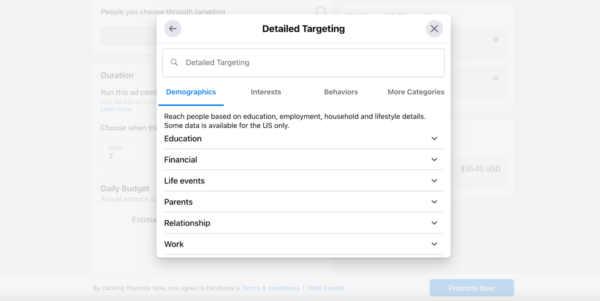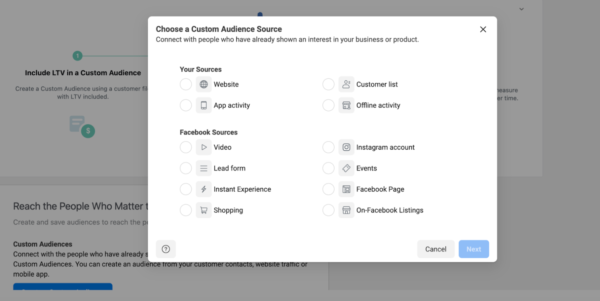
The average Facebook user generates more than $32 of revenue. How can you make sure you get your share? Fortunately for small businesses, the answer isn’t always to spend more dollars. When you learn how to scale Facebook ads effectively, you discover that sometimes you’re better off editing your content or testing new audiences.
Of course, sometimes the answer is to spend more, but you can maximize the effect of small budget increases by putting your dollars in the right place. Facebook ads can yield high returns on investment.
What is Facebook ad scaling?
You’ve run your first couple of Facebook ads. They performed pretty well, but you suspect they could do better. A business associate suggested that you try scaling your ads. You nodded thoughtfully even as you wondered if scaling an ad was more like scaling a mountain or a fish.
Don’t panic. Facebook ad scaling is simply the practice of taking your best-performing ads and making adjustments to get more out of them. There are two main types of scaling.
Facebook ads vertical scaling
This is the “spend money to make money” option. Put more money into successful ads, and they’ll reach larger groups of people.
The secret to vertical scaling lies in slow and steady increases. Sudden, dramatic budget increases will throw off Facebook’s algorithm. Your data can suffer, as can the platform’s ability to use your funds efficiently.
Facebook ads horizontal scaling
The other kind of scaling is horizontal. Instead of tweaking your budget, you tweak your audience targeting or creatives to maximize the reach or impact of your ads.
Horizontal scaling requires even more patience than vertical scaling, but it can be incredibly effective.
Why should you scale your Facebook ads?
Once you know how to scale Facebook ads, you’ll be able to extend the life and performance of existing ad campaigns. That means you won’t have to continually start Facebook ads from scratch to yield new results.
Scaling allows you to build on success, analyze your campaign results, and immediately apply the lessons you learn.
How to scale Facebooks ads
Beyond the “what” and “why,” you also need to know “how.” Try one of the following methods.
Increase your budget
Facebook ads vertical scaling is the most straightforward way to supercharge your ads. But when is scaling worth the extra money?
When you have the data you need
Don’t spread yourself too thin or move around too quickly in an attempt to minimize risk. Facebook wants you to succeed and its algorithm will help you do just that.
But you need to commit to a limited number of ad sets, the segments of a campaign that define whom you’re targeting and how. A smaller number of variables helps speed up the rate at which Facebook’s machine learning can process ad performance and maximize the impact of additional dollars.
Fashion brand Zaful discovered that it needed to concentrate its ad spend before increasing it. Too many ad sets and too frequent changes meant that campaigns struggled to generate meaningful data. When it reduced its active ad sets by 81%, it also reduced the cost of learning.
So take a breath, choose a limited number of ad sets, and keep your finger off the trigger until your ads have run for several days.

When the return on ad spend is high
It’s true that ad impressions build up brand awareness. Customer engagement — in the form of clicks, likes, follows, and email subscriptions — is vital to a business’s long-term success. Keep an eye on those social media performance metrics.
But you need to evaluate your paid advertising differently. Make budget decisions based on Facebook ad metrics. If campaigns aren’t generating a positive return on ad spend (ROAS), they’re not sustainable.
To calculate ROAS, divide the amount you’re spending on a Facebook ad campaign by the amount of revenue those ads generate.
When ad frequency is low
Ads have less impact the more that we see them. You don’t want to bombard your audience but rather to excite them.
The math also changes when you re-target the same people. Each impression costs money, so the more impressions that any customer receives, the more that customer costs you.
Use automated rules
Optimize your budget with Facebook’s automated rules. You can save yourself some time and money by letting the platform figure out how to scale Facebook ads most effectively.
Set handy automated rules that will put certain actions into place once given conditions are met. You can cap or pause campaigns or increase the funds available to ad sets that perform well.
Expand your audience
Sometimes people will surprise you and you may have secret would-be fans just waiting for you to find them. If you have a strong ad, try playing it to a broader audience.
If you’re set up to serve more remote customers, you might change your location. Or you could play with other demographic factors. Or try targeting a new set of interests or behaviors.
Build a look-alike audience
There are some crucial differences between Google Ads and Facebook ads. One of them is the way that they find their audiences. While search ads target user searches, Facebook ads allow you to target a specific audience. They even allow you to find more people just like your best customers with look-alike audiences.
First, build a custom audience of people with a demonstrated interest in your product or service. You can pull information from your website, customer lists, or email lists, as well as from Facebook sources. You can even customize according to specific behavior, such as how much of a Facebook video they watched.

Once you have your custom audience, you can build a look-alike audience, specifying location and size. Facebook lets you choose a percentage from 1 to 10, with 1 being the smallest audience whose members most closely match your original.
Note that smaller look-alikes tend to yield higher returns.
Refresh ads, offers, and calls to action
Sometimes you might need to switch up your creatives. You’ll fight ad fatigue and determine which content gets the best reception.
In addition to changing up the visuals, you might try different offers or promotions. Do you get better results when you give a flat discount, bundle products, or offer a BOGO deal?
Try changing the call to action, too. Instead of calling for an immediate purchase, you can use your Facebook ads to generate leads.
Ask ad viewers to sign up for your newsletter or a loyalty program. You can invest in your future relationship with customers when you combine your paid advertising with email marketing, the highest yielding digital channel for small businesses.
Where to start with Facebook ad scaling
You now know the difference between vertical and horizontal scaling, the benefits of ad scaling, and how to scale Facebook ads. You can strategically increase your budget, switch up your content or audience, and use Facebook’s tools to optimize your spending.
Get ready to do more with what you already have. The first step is to evaluate current or past campaigns. Do they meet the criteria for vertical scaling, and do you have the extra funds available? If not, choose between the various horizontal strategies and give one a try.




